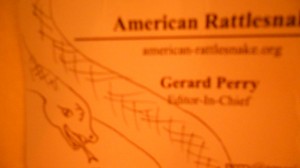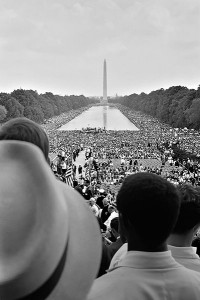Tuesday night I had the pleasure of attending a discussion held at New York City’s Penn Club, sponsored by the Center for Immigration Studies, which featured one of my favorite journalists/media critics, William McGowan. The author of Gray Lady Down: What the Decline and Fall of the New York Times Means for America, Mr. McGowan delivered a speech outlining the largely negative contribution New York’s “newspaper of record” has had on the immigration debate, both in the past and during the current nationwide battle over controversial measures such as amnesty and the DREAM Act.
McGowan’s talk divided the journalistic crimes of the New York Times into two major categories: sins of omission and sins of commission. The Times is replete with examples of both, the former found in its steadfast refusal to cover the 2007 case of a Mexican illegal alien who murdered a woman after being released by police in Denver, despite a long rap sheet. Despite the obvious newsworthiness of this horrific crime, and the fact that it was covered by both local dailies at the time, it did not merit the attention of anyone at the Times, which had a bureau in the city. An example of the latter is the concerted effort by the paper to affirm archaic, barbaric cultural and religious customs imported from the third world as valid alternatives to mainstream American culture. McGowan cited as evidence of this editorial practice the paper’s benign treatment of West African immigrants who practice polygamy in their adopted country.
In many cases, however, the two methods of promoting mass immigration and cultural fragmentation are found within the same story, as the Times attempts to both minimize the readily apparent drawbacks of this country’s skewed immigration policies while at the same time promoting the very policies that it had previously claimed had little to no impact on American society. A prime example of this double-edged assault is a story that examined the illegal alien sanctuary known as Maywood. The 2006 article focused on a group of illegal aliens who marched in support of amnesty, however it neglected to point out the fact that many of them trampled upon the American flag while at the same time calling for the Reconquista of the southwestern United States by Mexican nationals. And even as the Times produced laudatory coverage of the initiative to provide illegal aliens with official documentation in New Haven, Connecticut, it studiously avoided any mention of the crimes committed by the undocumented then living in New Haven.
One of the most fascinating aspects of Mr. McGowan’s talk was his recapitulation of the New York Times’s past coverage of immigration issues, which is an often overlooked chapter in the paper’s history. I found particularly fascinating his portrayal of its coverage of the 1965 Immigration and Nationality Act, which is a watershed law that inalterably redefined both the scope and nature of immigration into the United States. Although I had an inkling of how the Times treated immigration in years past, I was astonished at some of the vivid details that the author provided about how the paper had soft-pedaled what turned out to be the most transformational piece of domestic legislation signed into law during the 20th century.
As it turns out, one of the main reporters on the 1965 immigration bill had been a trusted member of the Kennedy camp, which at any other reputable journalistic institution would have raised alarms since the original impetus behind the bill had come from President Kennedy. After JFK’s assassination, his younger brother Teddy had squired the bill through a distracted Congress and onto Lyndon Baines Johnson’s desk, using much of the same divisive rhetoric supporters of the bill at the Times would employ. The New York Times’s coverage of the hearings leading up to eventual passage were equally slanted, devoting numerous column spaces to those testifying on behalf of the bill while it’s most eloquent critic-a woman representing a patriot organization from the state of New Jersey-was given short shrift.
Unfortunately, its coverage of immigration issues has not improved in the ensuing decades; in fact, it could be argued that it’s grown inexorably more biased and shrill since that seminal piece of immigration legislation was enacted. A compounding factor, naturally, is the explosive growth in Islamic immigration to the United States, which the Times has treated as an unalloyed good. McGowan made several trenchant points about the remarkable solicitude the Old Gray Lady has shown towards the world’s second-largest religion, including the observation that after the September 11th massacres in 2001-an issue whose coverage earned the New York Times several Pulitzer prizes-the paper went into overdrive trying to assure its readers that Islam was an anodyne alternative to America’s traditional, Judeo-Christian heritage. From its indulgent tone towards Muslim students who disclaimed their American identity-and condemned the country their parents immigrated to-to the madrassa created by radical Islamist Debbie Almontaser in the heart of Brooklyn, the Times has consistently neglected to ask the tough questions so many Americans wanted answers to in the wake of the September 11th attacks.
This deference to Muslim sensibilities dovetails nicely with what William McGowan describes as an institutional effort by the paper’s editors to create not a melting pot, nor even a mosaic, but a nation of collective victims. Or in this case, a distinct subculture of victims who have been unfairly treated by American society due to their customs-which include female genital mutiliation and honor killing-and religious beliefs, which can include a call to murder and/or convert anyone who does not subscribe to the shahada.The rampant victimology enunciated by the editorial staff at the New York times has gradually expanded to include numerous ethnic minorities, and the renewed interest in the seamier side of Islam has given the paper a perfect opportunity to expand this philosophy to include America’s newest-and from the perspective of Times editors, most besieged-minority, Muslims living in the United States.
I came away from this lecture greatly impressed by Mr. McGowan’s thorough deconstruction of what was once a prestigious media lodestar. Even though I might not agree with his assertion that the New York Times is salvageable, I do respect the eloquence with which he articulated his position. Keep your eyes open for an exclusive interview with the author of Gray Lady Down in the coming days.








Recent Comments